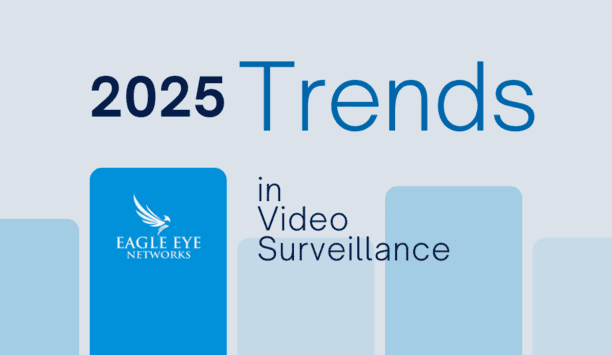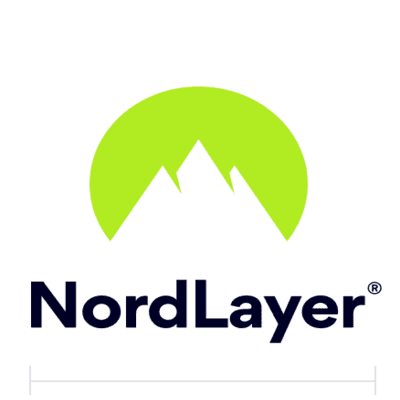What changes had the biggest impact on security in 2022?
Editor Introduction
With 2023 well underway, it’s a good time to look back on what we learned in the tumultuous previous year. In the security marketplace, there was no shortage of technology developments and a few challenges that kept 2022 interesting, to say the least. But what can we learn from the past? We asked this week’s Expert Panel Roundtable: What changes had the biggest impact on the security marketplace in 2022?
Every year the security marketplace is affected by changes in the economy, technological advances, geopolitics, and recently of course the global pandemic. In 2022 all those forces were at play, but it was specific technology changes, in my opinion, that had the biggest impact on the security marketplace. Specifically, 2022 was the year that artificial intelligence (AI) and machine learning (ML) really became operational in video surveillance. New AI features, functions, and products were introduced in 2022, such as AI-powered video search and LPR technology, that will supercharge growth in our industry. Combining AI and the cloud is the catalyst for that growth. In the cloud, AI can continually improve and deliver economical, reliable security and business intelligence to security professionals and business owners. Currently, AI/ML + Cloud is just starting to shake up this industry. The technology changes of 2022 will be a turning point for growth.
The security market is always evolving, which makes it hard to pinpoint just a few trends. That said, one common theme in 2022 was the continued emergence of new use cases for video analytics, often referred to as artificial intelligence (AI). Over the past few years, advanced video analytics have started providing actionable insights in areas that go beyond security, opening bold new operational and business intelligence possibilities. Another trend worth noting is the uptick in cybersecurity attacks on critical infrastructure facilities. These attacks have led to increased regulation as protecting critical infrastructure sites becomes more important. As our infrastructure becomes smarter and more connected, the security industry has a critical role to play in ensuring devices are protected against today’s most pressing cyber threats.
The adoption of video surveillance as a service (VSaaS) and complementary cloud applications ramped up significantly in 2022, which marked a turning point for hybrid-cloud and cloud-managed solutions. More and more enterprise security teams opt for a hybrid solution that combines the best of on-premise and cloud-based solutions: flexible, reliable, and scalable. Also in 2022, we saw an increase in the use of physical security data for operational decisions. Organizations are beginning to use data from their physical security systems to improve business processes via the creation of new outputs and/or additional value. As digital transformation continues to be a top priority, there will be increased collaboration between IT and physical security departments to use this data to serve organisational objectives. Finally, the supply chain crisis put a strain on manufacturers and integrators in 2022, but early indicators point to supply chain bottlenecks easing in 2023.
Broad application of artificial intelligence (AI) in camera-based security is leading a revolution in the automation of intrusion detection and deterrence elevating the effectiveness of video monitoring. Today, surveillance cameras have become active sensors, equipped with automated controls and AI algorithms that accurately detect intruders and alert monitoring before an actual theft occurs and without the delays of human intervention. Convolutional Neural Network (CNN) algorithms within the AI application recognize intrusion and take immediate and fully automated deterrence actions that surprise intruders and defy predictability yielding a nearly 100% success rate in deterring unwanted intrusion. Proper application of CNN also determines the success of the automated deterrence, thus focusing human operators on real threats and safety concerns that require intervention and possibly 911 dispatch. The result of this technology evolution is lower costs for both the service provider and property owner, driving higher market adoption and declines in burglary trends.
In 2022, the security marketplace saw global changes spurred by the war in Ukraine, political unrest, an ongoing pandemic, and more, forcing organisations to become more strategic in managing their risk. Because of this, there was a movement away from having executive protection teams physically on the ground in every region and instead reinforced the need for intelligence-driven, operations-led, threat-informed activity through holistic intelligence management solutions. These geopolitical issues impacted the security marketplace and the types of tools that organisations invested in 2022, which will only continue in the year ahead.
The increasing adoption of wireless door-locking systems and their integration into the broader security landscape via traditional wired access control systems had one of the biggest impacts on the security marketplace in 2022. This technology is expanding the footprint of access control within the built environment by reducing the overall cost per door of implementation. As well as reducing costs and making installation faster and easier, wireless systems also offer fresh opportunities to install these systems in a wider variety of locations, including older properties where in the past it would have been cost-prohibitive or even impossible to do so (such as historically listed and protected buildings for example). By offering all these benefits, we are likely to see wireless systems becoming even more important this year and beyond.
The major change we saw in 2022 was the increasing influence of end users in product and installation decisions. Historically, when end users had an access control project, they either put it out to bid or contacted their local integrator for a quote, who in turn would contact the manufacturers. In 2022, we saw an increase in end users contacting access control and smart lock manufacturers directly for quotes. Many end users and general contractors now expect to buy directly from the manufacturer and sub out the installation labor and wiring. On one project we saw a well-known manufacturer eliminated because they refused to sell directly to the contractor. You can now get a wide range of professional-grade smart locks, deadbolts, and crash-bars that are battery-operated and require no wiring or network integration, making it easy for anyone with basic mechanical skills to do it yourself.
Systems integrators moved decidedly from hardware sales to targeted selling through Software-as-a-Service in 2022. This has shifted the trajectory of the physical security market to a focus on delivering services. Most importantly, the end-user wants to know how they are going to manage the system and how easy (or hard) it will be for them to use in daily operations. They don’t care about the box on the wall, they want to know the system will provide security, safety, and logistics in an easy-to-control and managed platform. In the past, sales reps showed the customer system functions with a keypad-focused hardware demonstration. That’s a thing of the past, as customers go mobile and use their phones for operations and remote management. Of course, the cloud is a big facilitator of this approach, it provides the flexibility to efficiently add services and address customer issues or challenges with technology via cloud computing.
Many vendors struggled in 2022 with a supply chain that couldn’t keep up with increased demand. Longer lead times and higher freight costs impacted many manufacturers’ bottom lines. In short, demand went up, but supply didn’t keep pace, which resulted in higher prices and products being unavailable from many vendors. For manufacturers like i-PRO, because we have our own factories in multiple locations globally, the disruption was much less. We are moving our manufacturing back to Japan to further improve efficiency and significantly reduce manufacturing time while increasing the number of models compared to traditional manufacturing methods. Additional changes had to do with staffing challenges as the workforce continued to transition post-pandemic. Companies needed to do more with fewer resources and that meant deploying more automated processes across their security portfolio. This in turn led to more cloud adoption and the use of analytics to proactively notify security operators about important events.
2022 has been the year in which we start to see the full and long-standing effects of the pandemic on the working world. The greatest change we’ve seen is the introduction of hybrid working, a new way of working that is definitely here to stay. For those in the security industry, the hybrid working model has completely revolutionised how we approach security. This seismic shift in the corporate world means office buildings are quieter, or even vacant during certain days of the week with additional security measures paramount to providing sufficient protection. Business owners have had to reconsider how they approach security, ensuring that staff and assets are secure in quiet or even empty premises. A holistic approach to security is a fool-proof way to keep premises safe and secure in this new working environment. On-site professional security, coupled with well-signed CCTV and keyholding and alarm response services, will ensure office buildings, and the staff and assets inside them, are protected 24 hours a day, seven days a week.
More and more, IT stakeholders are present in the decisions around physical security and video surveillance. This shift has changed the types of solutions, products, and the system architecture that is being designed and deployed. It’s certainly led to the excitement about cloud and leveraging video for some of these more interesting use cases. The video system investments end users have made have been under-leveraged so it’s exciting to see that they’re going to get a lot more attention. Video data will actually help businesses run better and, in many cases, improve customer experiences, whether it’s sports stadiums telling people the length of the queue for the bathroom or some of the investments in the retail spaces that have been in place.
Editor Summary
From artificial intelligence and machine learning to cloud systems and wireless door locks, there was a wealth of product developments in 2022 that will continue to shape security in the new year. The challenges of 2022, such as supply chain concerns and an unsteady geopolitical climate, also had an impact. The residual effects of the pandemic continued to be top-of-mind, and the aftermath will continue to change our industry well into the future.
- Related links
- Axis Communications Digital video recorders (DVRs)
- Axis Communications CCTV software
- Axis Communications Access control software
- Eagle Eye Networks CCTV software
- Genetec CCTV software
- Genetec Access control software
- Salient Systems CCTV software
- TDSi CCTV software
- TDSi Access control software
- Axis Communications Access control readers
- TDSi Access control readers
- TDSi Electronic locking devices
- Axis Communications Network video recorders (NVRs)
- Eagle Eye Networks Network video recorders (NVRs)
- Genetec Network video recorders (NVRs)
- Salient Systems Network video recorders (NVRs)
- TDSi Network video recorders (NVRs)
- TDSi Access control cards/ tags/ fobs
- TDSi Electronic keypads
- Axis Communications Video signal devices & accessories
Expert commentary
A modern guide to data loss prevention
Download7 proven solutions for law enforcement key control and asset management
DownloadSecurity practices for hotels
Download2025 Trends in video surveillance
DownloadMaximising security and performance
DownloadDelta Scientific DCS8000 Bi-Fold Speed Gate
ASSA ABLOY Aperio H100 Wireless Access Control Handle
NordLayer: Comprehensive Network Security for Modern Workforce

























